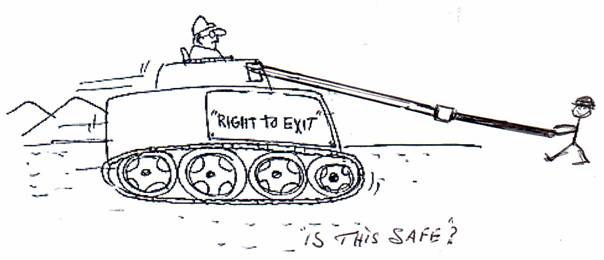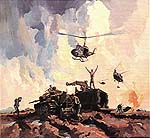Extracting Oversize 20 pdr Cartridge

Artificer Armament
In 1957 the 1st Armoured Regiment located at Puckapunyal Victoria had used up all its allocation of HE (high explosive) ammunition that they bought from the British Government.
The Australian Government Ammunition Factory, Maribyrnong undertook the manufacture of the costly rounds. The only problem was the shell casing that they made was a fraction oversize in its diameter. This meant that when it was chambered it was so tight that the breach block of the Centurion couldn’t extract it.
Of course there is a tool that fits in the breach that in turn screws into the base of the round after you have removed the primer. The rounds were so tight this didn’t work.
I was then a Corporal in the LAD and was called down to HQ by Maj. (Daddy) Duncan and the Regimental Technical Officer (RTO), Capt John Mead to discuss an upcoming demonstration shoot that involve the Minister for Defense and a number of so called bigwigs.
To get over the problem of the few rounds that were fired we had extracted the rounds using the cleaning rods. The problem had been reported and it would be some time before it would be solved. Meantime the Regiment didn’t want to cancel the shoot as the day of the demonstration was close.
I solved the extraction problem by getting a 20ft by two inch length of water pipe from engineers and another length of 1and a half inch gal water pipe that I welded into the two inch pipe. This fitted the 3.3inch Cent Barrel neatly and being hollow it fitted over the exploder firing mech that is located in the base of the cartridge and allowed the shell casing to be punched out into the tanks spent rounds ammunition basket.
It was then decided that to keep the action hidden from the guests we needed a firing range other than No2 Range that we usually used for demonstration shoots. This range was usually used because it fitted in well with Spectator Hill.
The Range selected was located beside the road that runs out to Greytown. It was ideal; it had scrub on the fence line and a small gully that ran parallel to the range and it was also shielded by small trees.
A Troop was to be used. The plan was:
- A tank to drive forward about 50meters and fire it’s HE, then reverse back behind the other two tanks,
- The main armament then traversed right and depressed facing the gully.
- In the hidden gully were four National Service personnel who were to run out with the tools ejecting.
- When signaled by the Crew Commander who would partly open the breach the gully crew would ram the pipe down the barrel and knock out the spent round.
There was a lot of dust around and the VIP’s were situated in such a position they couldn’t see what was going on.
The shoot was going well until I heard the dreaded word MISFIRE. Capt Mead ran over to me and said what do we do now? Having done an ammunition course I knew that the HE Round had to have setback before it was armed. I didn’t hesitate I got him to call the tank back and before you could say ‘Shit’ the gun was traversed then depressed, I signaled my crew, in with the Tools Cartridge (Pipe) Removal, they automatically rammed the two inch water pipe down the barrel and knocked out the round into the spent cartridge basket.
Next thing I look up and the crew of the tank have ejected themselves straight up through the hatches and the Cpl Tank commander tells me there is a live crumpled round in the basket. The look on his and his crews face was one of horror. I tried to tell him and his crew it was safe but to no avail. It wasn’t until I removed the round and hid it in the gully that the crew would get back in the tank. It all happened so fast that most people had no idea what was going on.
The rest of the shoot was uneventful Col Coleman, the Commanding Officer, only found out about the live round after they all left the range. The round was blown the following day.

appeared to be me


